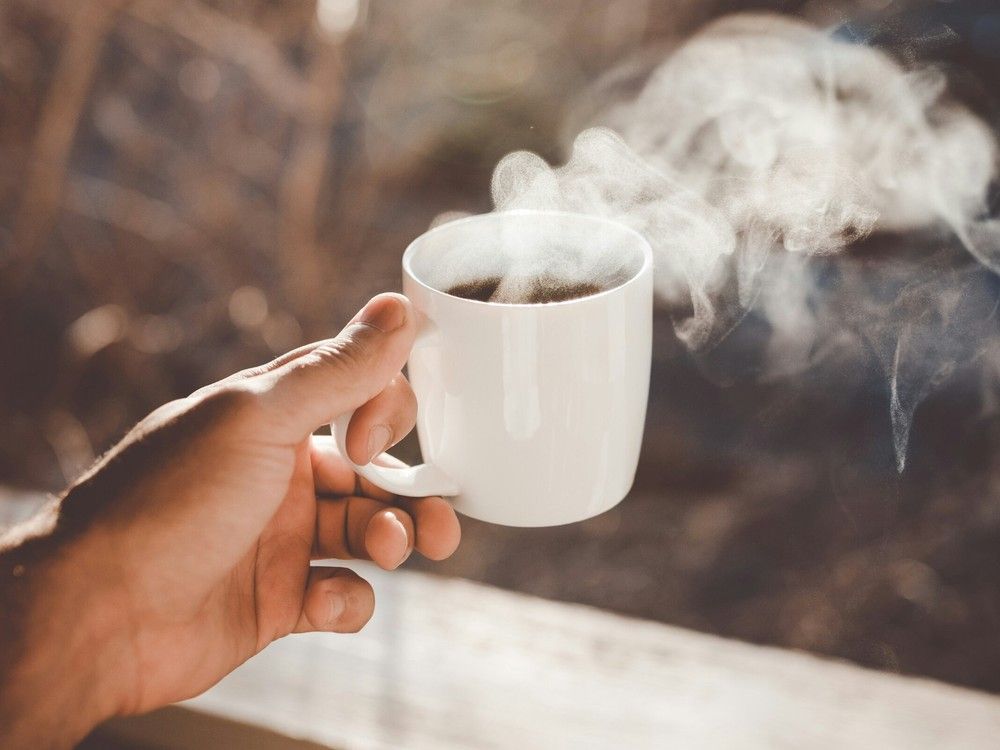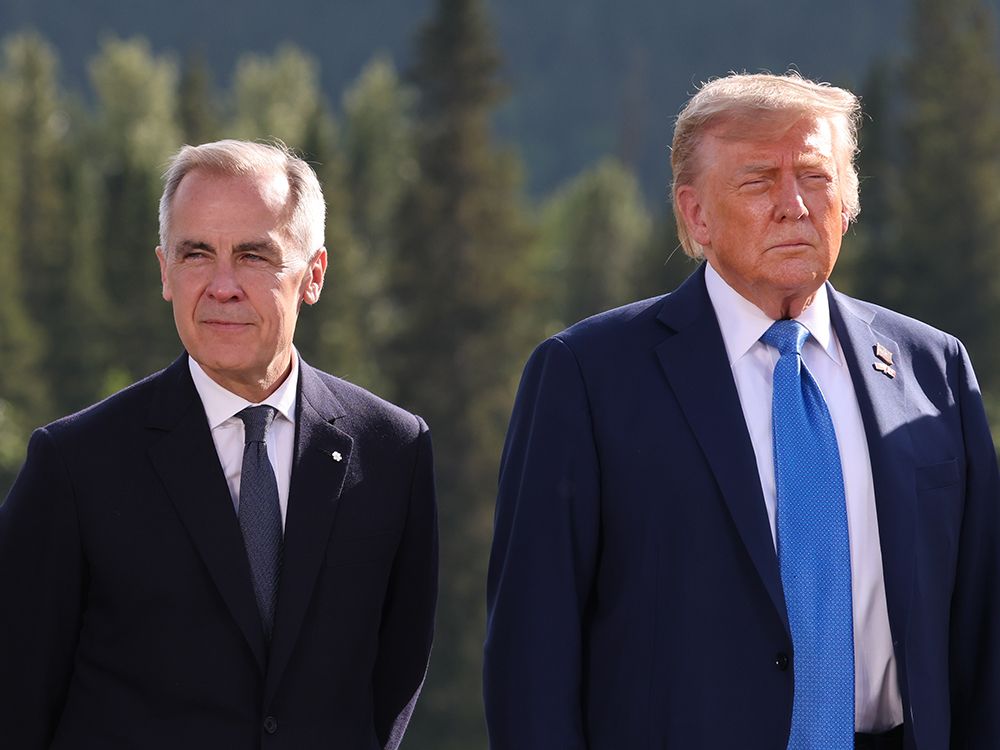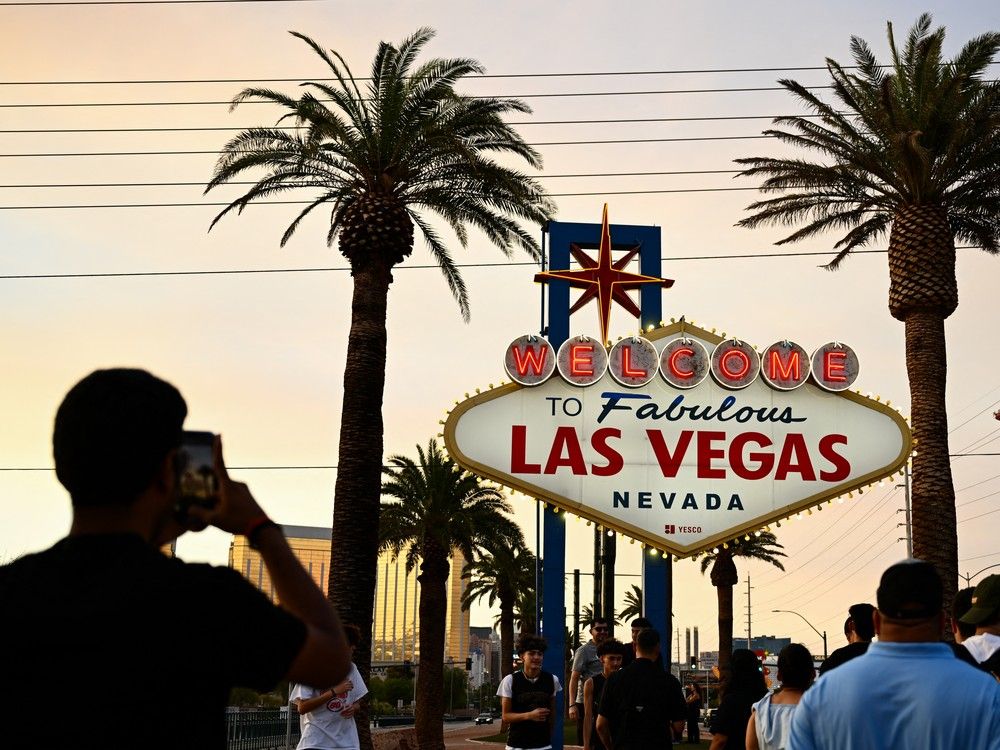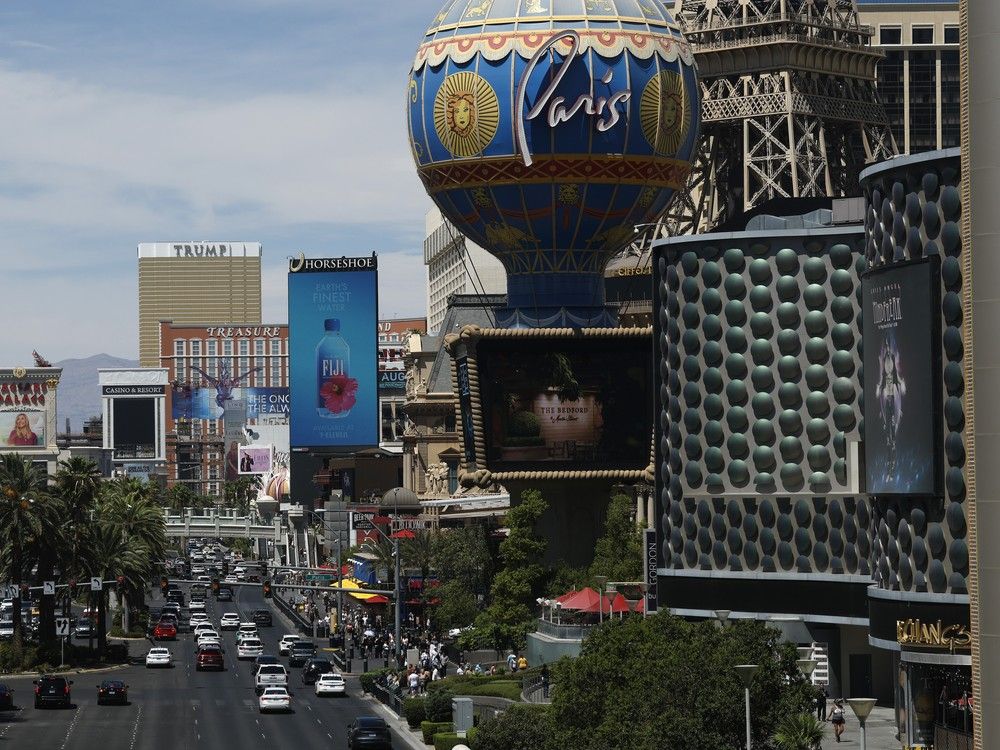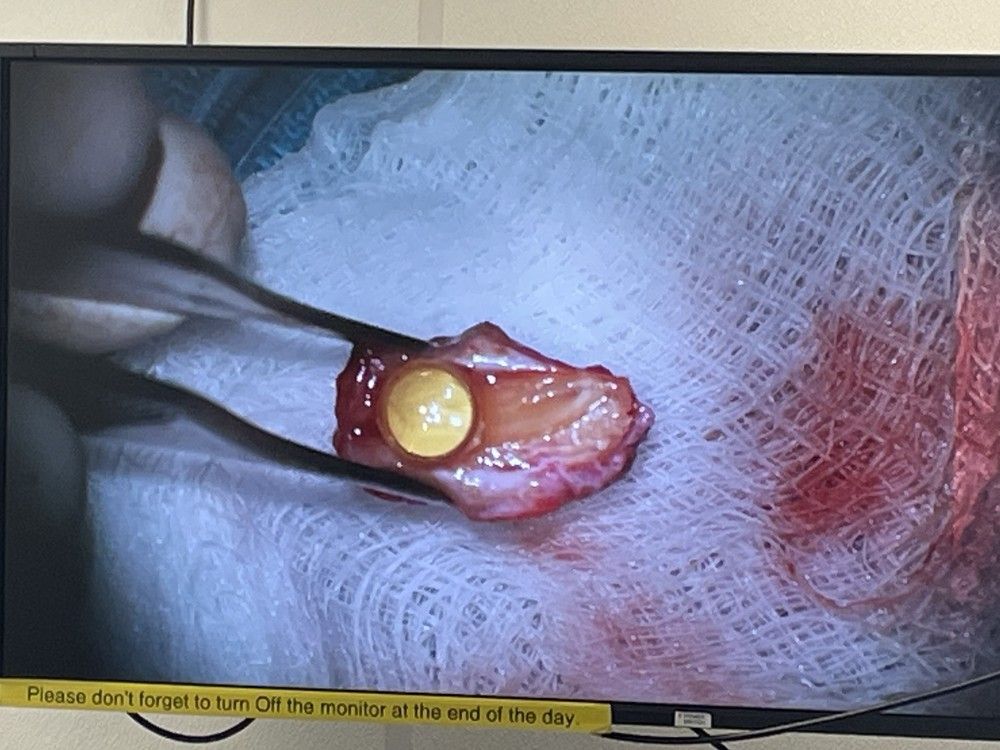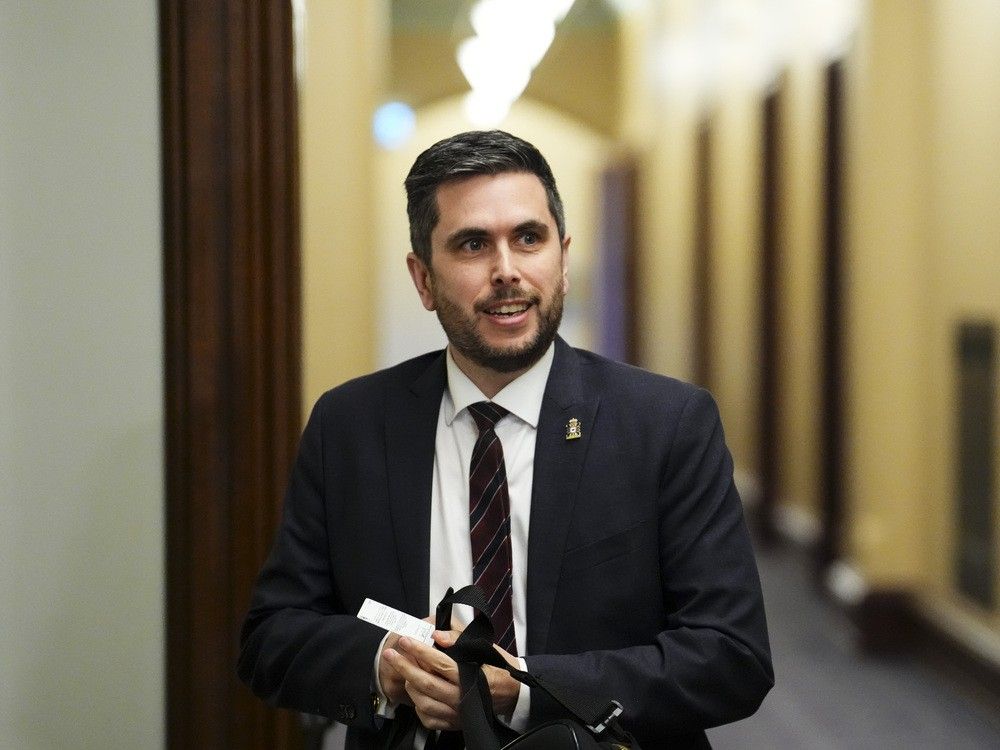
With a review of the Canada-United States-Mexico Agreement (CUSMA) looming amid President Donald Trump’s trade war, National Post spoke this week with Canadian political and trade policy expert Laura Dawson. Dawson is the former director of the Canada Institute at the Wilson Center in Washington, D.C., where she focused on bilateral economic issues, including NAFTA/CUSMA. She is now the executive director of the Canada-U.S. Future Borders Coalition and a regular media commentator. Much of Dawson’s work involves advising governments, businesses, and organizations on cross-border trade.
(This interview has been edited and condensed.)
What are the biggest risks and opportunities for Canada in the 2026 CUSMA review?
They’re two sides of the same coin. The biggest risks are that we become so preoccupied by the irritants that we don’t take the opportunity to look at new areas for improvement or cooperation.
Trade negotiations tend to be very irritant-focused. In the Canada-U.S. context, you’re always going to see dairy issues. You’re always going to see automotive rules of origin issues. You’re probably going to see something related to intellectual property in the pharmaceutical sector. These are all very important, but if your livelihood is outside of these sectors, then you are not really represented in these negotiations.
We have a much larger presence of services trade between the U.S. and Canada — a significantly growing area of digital services, technology, and innovation. I would really love to see people focusing on the future growth of these sectors and not just the same irritants that we have been bashing away at for decades.
How would you advise the Canadian team to prepare its negotiating strategy in light of the current tensions?
Canadian negotiators are always extremely well-prepared and extremely skillful. I mean, right back to the founding of the General Agreement on Tariffs and Trade (GATT), Canadian negotiators always punched above their weight because they did their homework and they understood the mechanics very well. And when you’re going up against a USTR and a Commerce Department that is very legalistic and detail-oriented, you have to be that focused on the technical details — you can’t just phone it in. So in that sense, I am confident that they are preparing well for the technical part of it.
What I am not as certain about is the extent to which they are prepared to deal with the Trump administration in its current context, and whether they are representing the concerns and aspirations of Canadian businesses. The
last consultation
(Canada) did for this negotiation actually took place last summer, before the election of Donald Trump. Obviously, things have really changed since then. I think it’s very important to do a comprehensive, cross-Canada, multi-sectoral consultation to figure out where they are now.
What key changes will President Trump be seeking? Which areas are most vulnerable to renegotiation?
It’s pretty clear that the sights are on what we’re calling the 232 sectors — the ones already in the crosshairs for Section 232 tariffs and of for steel and aluminum, auto parts, pharmaceuticals, copper, etc.
Also, the president really enjoys turning his attention to dairy. So that will certainly be high on his radar screen. It’s pretty easy to see what the U.S. suite of asks is going to be because every year the
USTR publishes the National Trade Estimates
. It’s a document put together by the State Department, Commerce, and embassies around the world that identifies the irritants and challenges that the U.S. is having in that country.
We should expect a more refined list of 25 or 30 subjects coming from USTR as early as this month.
Are there any particular changes that Canada would like to see or should be seeking?
There are so many areas that could be improved within the non-tariff barrier regime, and we’ve tried to go after this with things like the Regulatory Cooperation Council and other things — issues related to Cabotage (legal restrictions on foreign vessels/carriers), repositioning of truck containers, different labelling standards, and technical barriers. Thousands of things could be looked at within the non-regulatory cooperation, non-tariff barriers area. But really, it’s an agreement that has been progressively refined since 1989, if you start with the Canada-U.S. Free Trade Agreement. So there’s not a lot of sort of new stuff there.
My recommendations are more about the areas where we can start to build new levels of commitment and cooperation. We’ve seen a lot of interest in critical minerals. We know that in the area of innovation and digital issues, we can either fight about them — things like the Online Streaming and the Digital Services Acts — or we can find ways to strengthen our respective technology sectors to work together better, and in doing so, help the U.S. to achieve its foreign policy goal of reducing the role of China in the U.S. economy.
What lessons did Canada learn from the last round of negotiations that could help inform its approach this time around?
I think that one of the lessons that Canada learned is that it has to stay at the table.
There was a period during the last negotiations where the U.S. and Mexico went off to do a separate side agreement on several things, and Canada found itself running behind. So Canada has to stay at the table and it has to convince the United States that it’s serious about being at these negotiations — and not just, in Canadian terms, ragging the puck.
They have to figure out how to give the United States a little bit of what it’s asking for, but also make sure that they’re effectively managing offers and concessions.
Don’t give too much. Don’t give too little.
Prime Minister Mark Carney’s team has been trying to make more inroads with Mexican President Claudia Sheinbaum’s team in recent weeks. Is that a good move? Could it upset Trump?
I don’t think it’s necessarily an irritant to Trump unless Canada and Mexico show up and say, ‘You know, we’re going to do an end run around you, and we’re going to do something that is just Canada and Mexico.’
I think it makes a lot of sense for Canada to be engaging with Mexico as a business and economic partner, as a diplomatic partner. The relationship between Canada and Mexico has been a little rocky in the last couple of years. So I think that restoring those diplomatic relations so that they can be helpful to each other at an informal level is a really good idea.
But the economic interests of Canada and the economic interests of Mexico are quite different, and neither country is going to give up on something that’s very important to them in order to serve that other partner.
They can be stronger economic and diplomatic partners and better allies. But neither is in a position where they could do an end run around the United States and come out any better for it, because the United States is the market they both want.
There were tensions between former prime minister Justin Trudeau and Trump. Are you concerned about any personality issues this time?
I think Mark Carney has so far proven himself to be a very effective manager of that relationship. A trade negotiation starts at a high level — the prime minister and the president, they sort of wave the starting flag at the beginning. But the negotiation itself is very detail-oriented and painstaking, and it’s not something that either one of the leaders will be involved in very much.
I think that’s where a second level of diplomacy and engagement needs to take place. In the last round of negotiations, the two ambassadors were actually instrumental in helping to manage concessions and manage the final round that led to a settlement — Ambassador David MacNaughton and Ambassador Kelly Knight Craft. They sat near those negotiations and took phone calls to try to hammer out those last details — so, those other levels of government-to-government engagement and especially those other levels of business-to-government engagement (are crucial). It’s not just the negotiators sitting at the table; it’s representatives from these major sectors that are talking to the negotiators and telling them what they can live with and what they can’t.
There’s concern that some in the U.S. administration may be looking to upend former USTR Robert Lighthizer’s legacy. Do you have any concerns about that?
I have not been persuaded that it is a serious concern, especially not since Jamieson Greer was really mentored by Lighthizer and also is following the same sort of pathway — advancing U.S. economic interests, but using the legal tools available. Whatever we might think of USTR policy, they are using recognizable legal tools and not just sort of making stuff up on the fly.
How could the rise of protectionism and the trade tensions with China affect the next review?
I think that they are forcing everyone to be much more interest-based in their approach to these negotiations. When we were moving through the rounds of GATT negotiations and WTO negotiations that were leading towards this multilateral free trade regime, we kind of thought it was a set it and forget it type trajectory. You could only go in one direction, and that was reducing barriers and opening your markets for trade.
President Trump has really turned that on its head and said, “No, that is not an inevitable trajectory. We need to make sure that our interests are served by this big institution.”
The rest of the world is being made to follow suit. So, rather than focus on reducing barriers without question, we are being forced to focus on what our national economic interests are and reinstating some of those elements of industrial policy that we thought had gone by the wayside — tariffs, freight quotas, special protections, government intervention in particular sectors. These are all things we were trying to get rid of in the 1990s. Now they are back up again, with a vengeance.
Given how Trump feels about net-zero efforts, do you foresee labour or environmental provisions becoming new flashpoints in the CUSMA review? We know that Carney is a fan of ESG principles, so can you speak about how that might go?
Environment and labour have always played a role in our NAFTA communications. I think, though, that it’s a matter of interpreting environmental improvements for whom? And labour improvements for whom? Depending on who you ask, it’s not necessarily the same group. The things that are good for labour in the United States are not necessarily good for labour in Mexico. So I think we’re always gonna see those issues at play.
However, I don’t see strengthened environmental protection measures playing a significant role in this conversation. I think, in the current trade context, environmental issues are taking a back seat.
How can Canada balance the need for North American integration with protecting sensitive domestic industries?
I think it starts with evaluating and recognizing what your sensitive domestic industries are. Many of the designated sensitive sectors in Canada were considered sensitive as a result of reviews that were done in the 1970s and 1980s. Things like cultural policy, as far as broadcast goes, were developed before the Internet.
All of those so-called sensitive sectors were designated and protected a long time ago.
So I think it’s really important for Canada to do a domestic assessment and say, ‘OK,
w
hich of these things still needs to be protected and why? Which of our so-called protections are actually just tying our hands to innovation and growth?’
Can we expect the private sector or the provinces and civil society to play any more role in shaping Canada’s agenda than it did with last year’s consultation?
Yes, I think that the business and the provinces are really clamouring for it. We’ve seen a stronger-than-usual role for the provinces coming up because Doug Ford sort of filled a gap in leadership between Trudeau and Carney, and because a lot of the sectors that we’re talking about in these negotiations are actually under provincial control. Natural resource sectors and many financial services sectors are all under provincial control. So, of course, they need to be involved in any trade negotiations affecting those industries. Business has had to become very engaged and very nimble in talking to government to deal with the tariffs, counter-tariffs, remissions, all the things that they’ve needed in order to survive the last six months.
So they’re not going to sit back and wait for the nice man from the government to come and ask them their opinion. They are leaning forward and making their views known.
The thing that concerns me is that small businesses — businesses that are already working as hard as they can to stay afloat — don’t really have the time to be engaging in advocacy efforts in Ottawa. It needs to be easier for those folks to get their voice heard.
How concerned are you about the possibility of the U.S. just withdrawing from CUSMA? What could trigger such a move?
Five years ago, I would’ve said, ‘No, it’ll never happen because CUSMA is too foundational to North American commercial policy, and it provides too many advantages to the United States.’ But President Trump has convinced me that he will do almost anything to go after his objectives.
The thing that is keeping CUSMA in place in the United States is consistent pressure from American businesses that are showing how it benefits them — and evidence from think tanks, scholars, banks, and Wall Street that they need to keep this in place.
Competitiveness depends on inputs from allies and, in particular, from Canada and Mexico. We keep seeing that as these new tariffs are imposed, the CUSMA exemption is in place, and it’s like the shield of protection that’s continued over the last several months. That gives me hope that it’s possible to protect and sustain CUSMA, but only as long as the White House and business community are convinced that it’s in their interests.
I think Canada could be working a lot harder to ensure that positive messaging about the economic benefits of CUSMA gets to Americans and that it’s hitting at all levels, not just in Washington, but in state capitals, local businesses, et cetera. Canadians need to be much more vocal in getting that message, not just to U.S. federal legislators, but to state-level legislators as well.
Canada has been used to being pretty quiet and flying under the radar within the U.S., and now that muted voice is acting to its detriment.
How realistic is it for Canada to reduce its trade dependence on the United States by turning to other markets?
I think Canadians have been a bit disingenuously sold a false hope that the U.S. market can be replaced with diversion to other markets. That somehow the European Union can be as viable and as profitable as the United States was, or that they can trade just as easily and effectively with Indonesia and Brazil. Businesses will tell you that the reasons why they don’t trade very much with the European Union is that they make a lot of the same stuff that we do at pretty much the same prices, and it’s expensive to move things across oceans. Similarly, Brazil and Indonesia can be great markets for some, but it’s also a very expensive market to learn about, do business in, and again, long distances.
Canadians who want to continue to engage in international trade as their livelihood have to accept the reality of some kind of negotiated agreement with the United States, even if they don’t agree with the politics of the U.S. administration.
Our website is the place for the latest breaking news, exclusive scoops, longreads and provocative commentary. Please bookmark nationalpost.com and sign up for our politics newsletter, First Reading, here.








